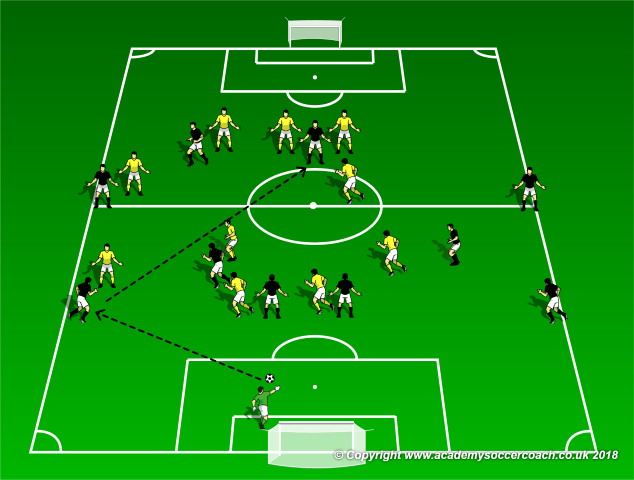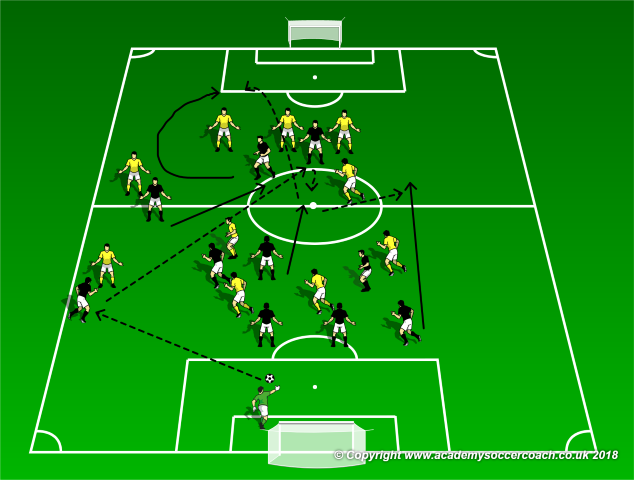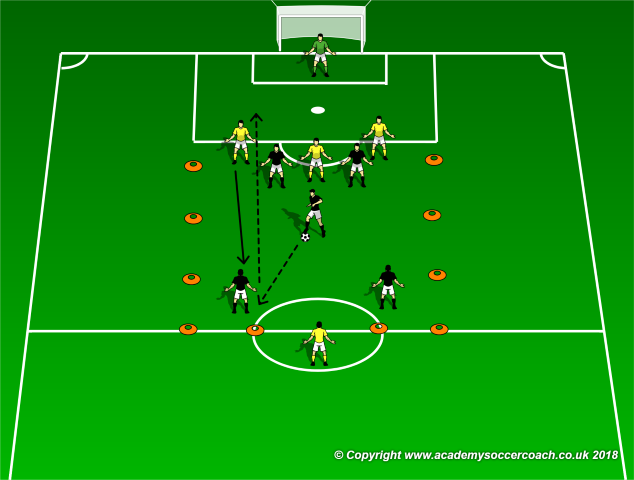By Mike Smith
This past off season one of my former players was speaking with the new coach for her old school and mentioned calling me for some help as when I was there ( it is a very small, rural area ) the team she played on was able to establish the program as a district contender and consistent regional tournament participant. I was flattered by the chance to mentor a younger coach a bit, even though it made me feel old, and was even able to watch his team play and offer some advice. I was very impressed with the hustle and toughness his side displayed throughout the match, even in the face of a solid defeat.
The only real piece of advice I offered was something I see the need to remind my players of time and time again – the shape and movements of your players on the field HAS to match what you are trying to do with the ball. In the case of this young coach’s team, their back line was trying to get wide and possess out of the back, but their offensive plan was to force the ball right up the middle, early, into their main goal scorer who was continuously doubled by both opposing center backs. When the ball was inevitably lost, the opposing teams quick forwards ( with one of the leading scorers in the state) were able to exploit the gaps between the defenders before any recovery was possible. It looked like this:

While getting wide on any keeper distribution is standard, even with the two center backs marking tight, the additional width provided by the wing mids and even one of the forwards is wasted here if play is forced up the middle right away. Note the three defending players in the center of the field and the clean triangle they have between them. The back and mids who were providing width on the far side are totally out of the play and this is basically a 5 v 2 up the center on the quick counter as soon as possession is lost.

The same idea shown above, with out the width on the far side and two centrally located forwards at least provides a chance here. Even on a poor touch from the attacking forward, a quick step up to pressure from the center mid could change a turn over into a chance and some supporting movement could now see the attackers in a 5 v 4 situation right up the pipe.
This can be practiced and I will admit to using this style when facing an opponent who is just better on the wings than my side. I generally prefer a wide attacking style with a more compact back line, but I always make sure my teams can transition between the two concepts on the fly. In a close game, 70 minutes spent attacking up the middle can lead to 10 very good minutes attacking wide to finish out the match – or vice versa. Try this drill at your next practice to work on this concept.
Set Up

Section off the center of one half of the field using the corners of the penalty box ( as shown ). 5 attackers must stay inside this area to attack. The penalty box is included as part of the attacking area. 3 defenders and a keeper guard the net and the defending team may play out to a target player in the top of the center circle ( as shown ) for the counter attack point. No magic here, this just helps your players get used to the close in touches and combinations required to break down a compact defense. The goal is to either possess the ball in the center, or burn the defenders if they step out to challenge. At least one attacking player should always be mindful of the counter attack.
Progression
Add defenders to ratchet up the pressure including an extra target player in the center circle. Numbers should always be up in favor of the attacking team though.
Coaching Points
Possession in tight spaces and penetration through combinations are the coaching points here. The coach should make sure the attackers are active, vocal, working together in addition to keeping the ball moving to off balance and draw out the defenders.
By Mike Smith
Currently the Head Coach for University Heights Academy Boys Soccer in Hopkinsville, KY , Mike is in his 14th year as a high school head coach with 23 years coaching experience overall and 34 year as a student and fan of the game. He holds a USSF D License.


